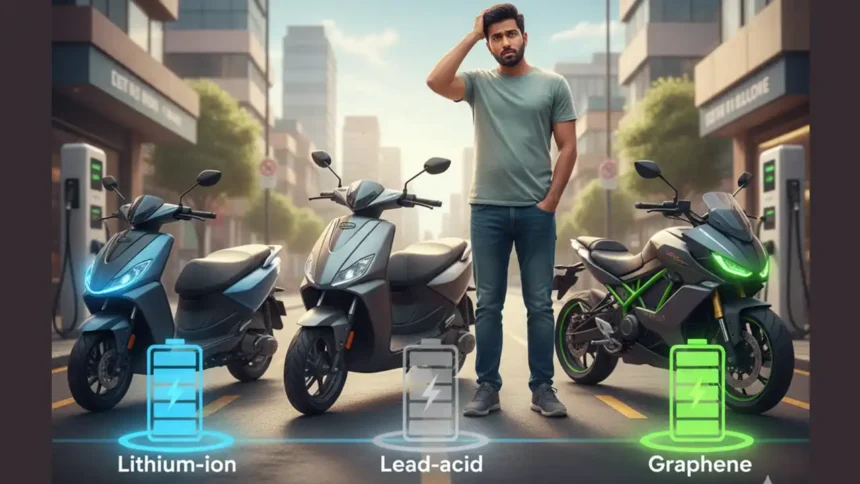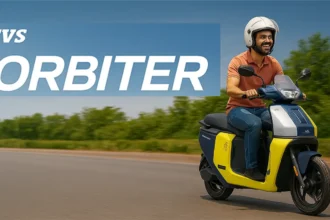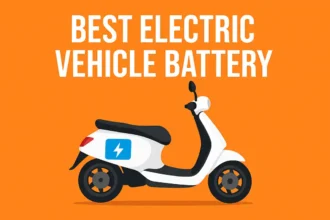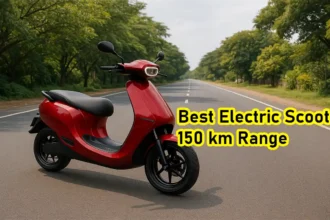Maximizing Your Electric Scooter Battery Life: Real Tips from EV Experts
Electric scooters have become a smart and popular choice for city travel, blending eco-friendly power with practicality for daily commutes and short trips. Their batteries are the heart of their performance, reliability, and cost-effectiveness, making battery life one of the most discussed topics among riders and buyers. But how long does an Electric Scooter Battery Life really last? What can you do to make it last longer? This expert guide explores every detail about electric scooter battery life, battery types, key factors affecting longevity, actionable maintenance tips, and how to make your battery perform at its best.
Why Electric Scooter Battery Life Matters
Battery life determines how often you need to charge, how reliable your scooter will be over time, and when you’ll face expensive battery replacements.
A scooter battery that lasts longer saves money, boosts convenience, and helps the environment. Knowing what affects battery lifespan lets scooter owners make better decisions and enjoy worry-free rides.
Types of Electric Scooter Batteries
There are mainly three types of batteries used in popular electric scooters: Lithium-ion, lead-acid, and now graphene batteries. Each type offers different strengths and weaknesses for performance, price, and expected life.
Lithium-ion Batteries
Lithium-ion batteries are most common in today’s scooters.
- Typical lifespan: 3 to 5 years, or around 500-1000 charge cycles.
- Lightweight and high energy density.
- Quick charging capability.
- Efficient and less prone to “memory effect” (they don’t lose capacity when not fully discharged).
- Require moderate maintenance.
Lead-acid Batteries
Lead-acid batteries are heavier and cheaper, but are now less popular for premium models.
- Lifespan: 1.5 to 2 years (average 300-500 cycles).
- Heavy and bulky, but affordable.
- Need regular maintenance and are prone to reduced capacity over time.
- More sensitive to full discharge (avoid draining them completely).
Graphene Batteries
Graphene batteries are new and known for quick charging and a moderate lifespan.
- Lifespan: 2 to 2.5 years (around 500-800 charge cycles).
- Quick charging compared to Lead-acid batteries.
- Lighter than lead-acid and more stable.
- More expensive than lead-acid, it is often found in premium scooters.
What Does “Battery Life” Really Mean?
People commonly use “battery life” to mean two things:
- How long the scooter runs between charges (range).
- How many years or charging cycles does the battery last before needing replacement?
Most manufacturers qualify battery life in “cycles” (one complete discharge and charge equals one cycle). The more cycles a battery provides, the longer it lasts.
Factors Affecting Electric Scooter Battery Life
Several real-world factors affect how long a battery lasts before you need to change it out:
Usage Patterns
Heavier and frequent use rapidly drains the battery and shortens its overall life.
- Aggressive riding, frequent fast acceleration, and brake use stress the battery.
- Riding up hills, carrying heavy loads, or using powerful models may reduce lifespan.
Charging Habits
How and when you charge matters a lot.
- Avoid letting the battery discharge completely; partial charging is better for lithium-ion and graphene batteries.
- Charge at moderate temperatures, not in direct sunlight, and don’t immediately charge after hard rides.
- Use the original charger; cheap replacements can damage cells.
Environmental Conditions
Where you store and use your scooter can make a big difference:
- Batteries perform best around 20°C to 25°C.
- Heat and freezing temperatures reduce overall battery life, so avoid leaving your scooter in direct sunlight or freezing places for long periods.
- Humidity, water exposure, and dust may also damage batteries.
Battery Quality and Manufacturer
Not all batteries are made equal:
- Reputed brands last longer than generic ones because of better build and safety features.
- Cheap batteries may save money initially, but often fail early.
Maintenance and Care
Simple, regular maintenance preserves battery life:
- Clean battery terminals occasionally.
- Avoid deep discharge; never let the battery drain completely if possible.
- If not using the scooter for a few weeks, store the battery at around 50% charge in a cool place.
How to Extend Electric Scooter Battery Life
Following these tips can add years to your battery and save money:
- Charge your battery before it’s completely empty; try not to let it go below 20%.
- Use good good-quality charger and cable.
- Store your scooter indoors, or at least out of extreme sunlight and rain.
- If you won’t use the scooter for weeks, charge the battery to 40-60% and check every few weeks.
- Clean the battery area regularly and keep it dry.
- Never use damaged or incompatible chargers.
- Follow all manufacturer guidelines for charging and usage.
Signs That Your Battery Needs Replacement
Over time, your battery’s health will decline naturally. Notice these signs:
- Reduced range per charge, even with normal riding and proper conditions.
- Scooter takes much longer to charge, or doesn’t hold a charge well.
- Significant power drop, slow speeds, or battery indicator errors.
- The battery feels physically swollen or hot after charging.
If you notice these issues, a replacement is needed for safety and performance.
Comparison Table: Battery Types and Lifespan
| Battery Type | Lifespan (Years) | Charge Cycles | Weight | Price | Charging Time | Maintenance |
|---|---|---|---|---|---|---|
| Lithium-ion | 3-5 | 1000-1500 | Light | Higher | 3-5 hrs | Moderate |
| Lead-acid | 1.5-2 | 300-500 | Heavy | Lower | 6-8 hrs | High |
| Graphene | 2-2.5 | 500-800 | Heavy | Medium | 4-6 hrs | Low-Moderate |
Evaluating Battery Replacement Costs and Value
Replacing scooter batteries carries a real cost.
- Lithium-ion batteries: Most expensive, but offer the longest life and the lowest average cost per year.
- Lead-acid: Cheaper upfront, but more frequent replacements needed.
- Graphene: Better lifespan than Lead-acid, but pricing is higher than Lead-acid.
Always factor in battery replacement when calculating the total cost of ownership for your electric scooter.
Battery Disposal and Environmental Impact
Never throw batteries in regular trash.
- Batteries contain metals and chemicals that harm soil and water if disposed of improperly.
- Use authorized battery recycling or disposal centers.
- Many manufacturers offer battery take-back or recycling programs.
Future Technology in Electric Scooter Batteries
Innovations continue to evolve in EV batteries:
- Graphene and solid-state batteries are promising longer life and faster charging.
- Smart battery management systems improve charging cycles, safety, and real-time health checks.
- Manufacturers increasingly offer modular batteries that are easier to replace or upgrade.
Real User Experiences and Myths
Actual battery lifespan varies by user:
- Some riders get 3+ years from lithium-ion batteries with careful care.
- Aggressive, frequent riders may see reduced life, especially if batteries are fully drained often.
Myths:
- “If I always drain my battery before charging, it lasts longer.” This is wrong for modern batteries.
- “Storing batteries fully charged is safest.” Actually, 40-60% is best for long-term storage.
Conclusion
The battery is the heart of every electric scooter. Knowing how long the battery lasts, what affects its lifespan, and how to take care of it allows you to save money and always enjoy smooth, safe rides. By choosing the right battery type, following smart charging habits, and keeping your scooter’s battery clean and cool, you’ll avoid unwanted breakdowns and maximize the value of your eco-friendly transport. Always use safe disposal or recycling for old batteries, and stay alert for new battery technology—because the future of street-smart travel is electric, and well cared-for batteries will help keep you on the move.
Frequently Asked Questions
Q: How many years will my electric scooter battery last?
A: Lithium-ion: About 3-5 years, lead-acid: 1.5-2 years, graphene: 2-2.5 years, if cared for properly.
Q: How do I know if my battery needs replacement?
A: Your scooter’s range drops, charging slows down, the battery overheats, or doesn’t hold a charge well.
Q: Is it safe to charge overnight?
A: With high-quality modern scooters and chargers, yes—but unplug after full charge for best long-term health.
Q: Can I change the battery at home?
A: Most models allow easy battery swaps, but follow the manual and safety instructions; some require technical help.
What damages my battery fastest?
Extreme heat, deep drains, using unofficial chargers, poor maintenance, and very frequent riding.





